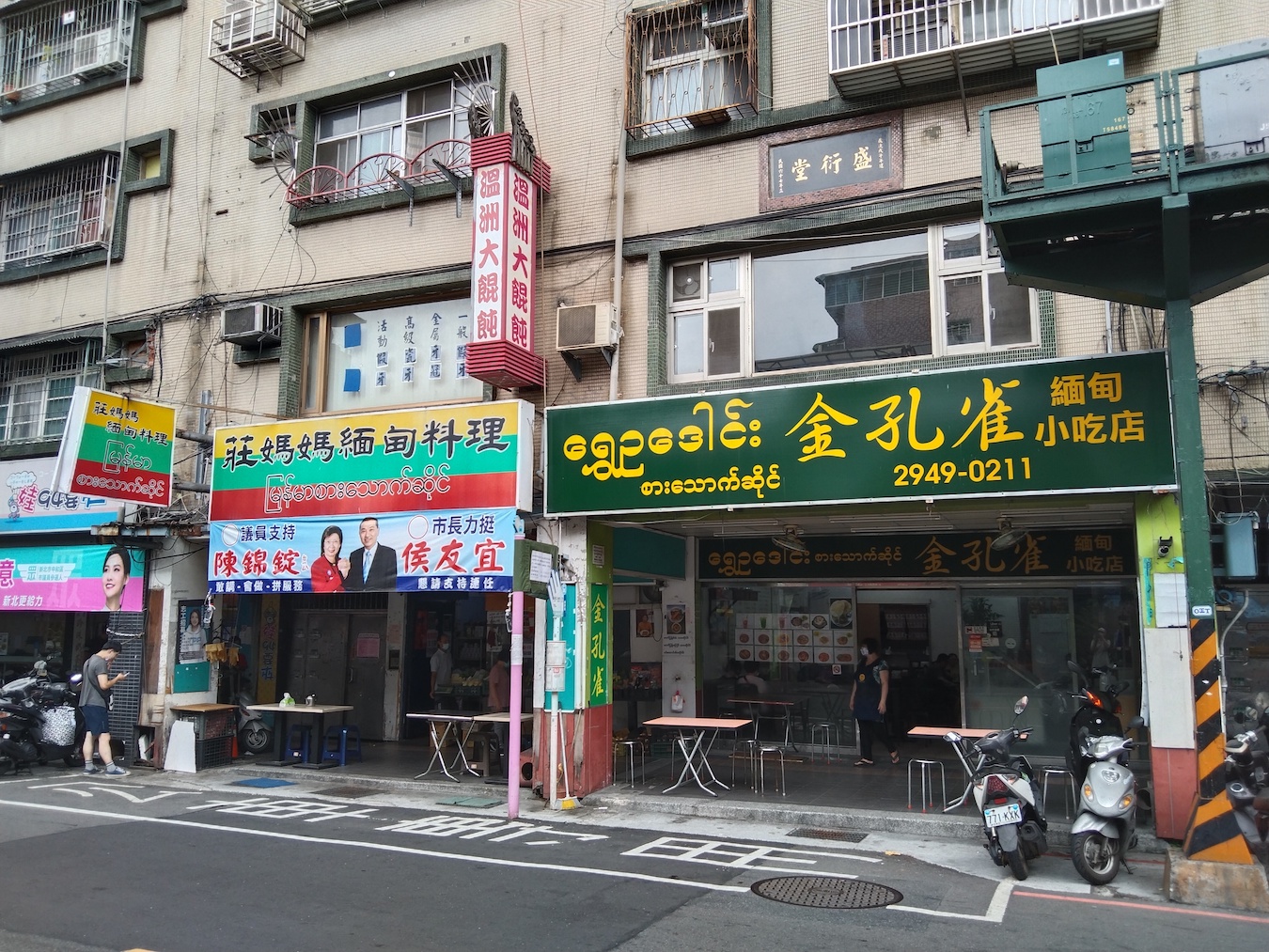by Brian Hioe
語言:
English
Photo Credit: Foxy1219/WikiCommons/CC BY-SA 4.0
AFTER A POPULAR banh mi stand in Zhongli in Taoyuan was suspected to have caused food poisoning in over 500 individuals, the Food and Drug Administration (FDA) announced yesterday that it will increase inspection of establishing serving “foreign cuisine”. It is thought that the food poisoning resulted from poor sanitation and incorrect storage of eggs. The stall has since been fined 540,000 NT and salmonella was later found through testing of affected individuals.
Nevertheless, it is a clear case of racially motivated targeting for the FDA to step up inspections of “foreign” food stalls. It was not specifically stated what “foreign” is defined as but it is clear that it intends to step up food inspection of Southeast Asian food stalls in particular, as the FDA raised the example of “Little Burma” in Zhonghe as an example of a place it might inspect. The residents of Little Burma are mostly Southeast Asian of ethnic Han descent from Myanmar. Previous statements by the Taoyuan Department of Health directly indicated that it would inspect Southeast Asian food establishments as a response to the incident.
Nevertheless, the issues occur not because of any issues with Southeast Asian food that leads it to be more unsanitary compared to Taiwanese food, but because of the actions of one specific food stall. It is probable that the owners of the stall were Vietnamese and so, it is probable that it will primarily be establishments owned by Southeast Asian migrants to Taiwan that are targeted.
By contrast, will Southeast Asian food stalls owned by Taiwanese be targeted? It is hardly as though Taiwanese food establishments as a whole would be targeted for a food safety violation that led to several hundred cases of food poisoning if the incident had occurred in a Taiwanese eatery. If the incident had happened in, say, an Italian or French restaurant, it is unlikely that there would be inspections of Italian or French restaurants as a whole.
This proves the latest incident in which Southeast Asian migrants were targeted because of the belief by health authorities that they are more unsanitary and prone to unhealthy behaviors compared to Taiwanese.
 Photo credit: Foxy1219/WikiCommons/CC BY-SA 4.0
Photo credit: Foxy1219/WikiCommons/CC BY-SA 4.0
The most prominent case in point in recent memory may have been during the COVID-19 pandemic, when clusters broke out among migrant workers at electronics factories in Miaoli. Migrant workers were confined to their dormitories for months on end, under surveillance and not allowed to move about freely, because of the belief that they were more prone to spreading COVID-19. By contrast, their Taiwanese counterparts that worked at electronics factories did not face such treatment.
Indeed, locking migrant workers in dormitories–often crowded and dirty–was all the more likely to increase the spread of COVID-19. Nevertheless, what Taiwanese society hoped for was that migrant workers were locked away from the rest of society during this time. During this time, gatherings of migrant workers were honed in on by police.
But, more broadly, another visible trend is that police tend are quicker to resort to violence against individuals they believe to be migrant workers.
One case in point dates from July, involving a seventeen-year-old of mixed race descent who was attacked by plainclothes police in Changhua while on the way to his part-time job. The student was half-Vietnamese and was chased by police who suspected him of being an undocumented, “runaway” migrant worker. The student reacted by fleeing, stating later that the police officers did not identify themselves before pursuing him, and that he thought he was being kidnapped. After colliding with a tractor during the chase, he later required seventeen stitches.
Another example includes a female music teacher who was tackled by police who suspected her of being an undocumented migrant worker in April 2021 because she refused to produce identification when questioned. In August 2021, a migrant worker was arrested by police for not having identification on her after she merely stepped away from her home for a moment to throw out the garbage.
A more dramatic example, however, is the shooting death of Nguyen Quoc Phi in August 2017. Police claimed that Nguyen was attempting to steal a car and attacked them, but questions were raised regarding that Nguyen did not know how to drive. Likewise, the incident did not merit immediately responding with deadly force. After Nguyen was shot nine times, police reportedly did not perform CPR and instead left him to bleed out.
Although food inspections are not on the level of direct violence, this proves the latest example of the discriminatory targeting of Southeast Asia migrants in Taiwan, then. This proves ironic, seeing as the Tsai administration has otherwise sought to tout Taiwan’s growing diversity, with increased immigration from Southeast Asia, as a way to distinguish Taiwan from China, After all, one in ten elementary or middle school children has a foreign-born parent, usually from Southeast Asia. Yet discriminatory attitudes continue to be deeply ingrained in Taiwanese society and where law enforcement is concerned, this is reproduced within the government, health authorities, and law enforcement.

